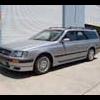Alarm Question!
Announcements
-
Similar Content
-
Latest Posts
-
Will the clear coat dissolve the ink tho?? I thought about clear vinyl tape too. Thinking what to do haha. The one I have now is cracked in 1 spot, otherwise mint. Plus the MINES one is much thicker plastic material so its not flimsy at all.
-
No. Go a different colour, and just trim it at an edge line. Even manufacturers do different panels different colours etc.
-
I see no real downsides to ITB's, apart from the initial cost of my drive in drive out lifestyle, the "upsides" is they sound cool and would add lots of smiles I am willing to pay to play for the extra smiles I've spent the morning googling and youtubing the BBR ITB's, a "little" extra power and throttle response, but alot more dort, and really, I'm only really in it for the dort Who knows, after all this money is spent I might even make 150kwatw....LOL
-
By TurboTapin · Posted
With my block out to get honed, I'm just prepping all my auxiliary components in my mean time. I took my oil pump apart to inspect and repack it with assembly lube and either haven't noticed this in the past or found my answer and can't remember. What exactly is the regulator washer that the manual mentions replacing? I don't have one and from the manual it seems to seal the regulator plug to the housing but I can't see it on any pictures of new pumps either. Can anyone fill me in? I'm presuming this was phased out as I also can't find a replacement part in epc. Image of a new pump. Can't see a washer there either.








Recommended Posts
Create an account or sign in to comment
You need to be a member in order to leave a comment
Create an account
Sign up for a new account in our community. It's easy!
Register a new accountSign in
Already have an account? Sign in here.
Sign In Now